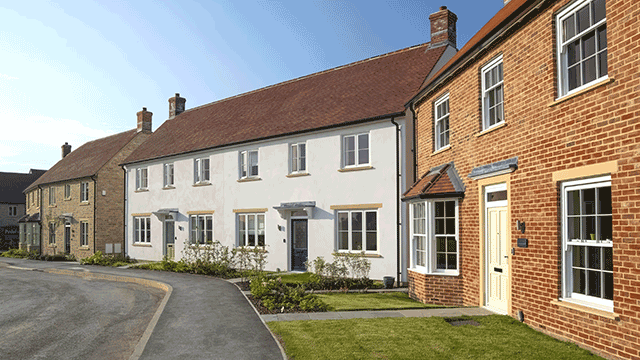Telecommunications – Electronic communications code – Lease renewal – Claimants seeking renewal of lease of existing greenfield telecommunications site – Claimants referring to Upper Tribunal to determine appropriate rent or consideration under paragraph 24 of Code – Amount of rent payable for code rights over greenfield site – Whether respondent site provider having right to terminate lease for redevelopment – Terms of lease determined accordingly
The claimants sought the renewal under Part 5 of the Electronic Communications Code of the lease of a greenfield telecommunications site at Vache Farm near Chalfont St Giles in Buckinghamshire. It comprised a fenced compound of 96 m sq (16m x 6m).
The previous lease was granted by the owners of Vache Farm in 2005 for a term of 15 years and was assigned to the claimants in 2015. In 2018, the respondent acquired an overriding lease of the site for a term of 50 years and became the claimants’ immediate landlord. The rights conferred by the previous occupational lease continued under the Code after the expiry of the contractual term in May 2020.
In December 2020, the claimants made a reference to the Upper Tribunal seeking new code rights which was stayed pending appeals in other cases which had now been resolved. The principle that a new lease should be granted was no longer in dispute and most terms had been agreed between the parties.
It was agreed that the new lease would be for 10 years with a break exercisable by the operator after five years. There would be a rent review by reference to RPI also after five years. The only significant terms remaining in dispute were the amount of the rent and whether the respondent, as site provider, should have the right to terminate the lease for redevelopment.
Held: The terms were determined accordingly.
(1) The tribunal was required by paragraph 34(11) of the Code to determine the terms of the new lease of the site in the manner described in paragraph 23. By paragraph 23(2) the new lease was to contain such terms as the tribunal thought appropriate subject to the minimum requirements in paragraphs 23(3) to (8). Amongst those was the requirement that the terms imposed had to ensure “that the least possible loss and damage is caused by the exercise of the code rights” to those who occupied the land or owned interests in it (paragraph 23(5)).
It was not the policy of the Code to stand in the way of the redevelopment of sites. Provided the intention was genuine, there was no reason why a different approach should be taken where the intended redevelopment was for a telecommunications use, even if the net result was that a particular operator might in future enjoy less favourable terms at that site than if its previous lease of the land had continued. If, at the end of the full 10-year term of the new lease, the respondent opposed a renewal because it intended to redevelop the site with a new mast, the claimants would not be entitled to complain that the new mast would be owned and managed by the respondent or an associated company. All that mattered would be whether the respondent could prove the necessary intention: EE Ltd and Hutchinson 3G UK Ltd v Stephenson and another [2022] EGLR 38 applied.
(2) The real issue was whether the respondent should have the right to terminate the new lease for redevelopment sooner than at the end of the 10-year term. The answer involved balancing the need of the operator for a reasonable period of security, with the entitlement of the site provider to have the opportunity to redevelop the site if it could obtain the necessary consents and persuade the tribunal that its intention to do so was genuine.
There was no good reason to limit the break clause agreed in principle so that it was exercisable only if the intended redevelopment was for some purpose other than for a telecommunications use. On the other hand, a reasonable period should be allowed before any redevelopment opportunity could be exploited. Here, there was no evidence that the respondent would be in a position to implement a redevelopment scheme at the site in the short term.
Therefore, termination would not be permitted earlier than the fifth anniversary of the term and, to provide a degree of certainty for both parties, it should be exercisable by giving not less than 18 months’ notice expiring on that date or any subsequent anniversary, if the respondent (as landlord) intended to redevelop all or part of the site and could not reasonably do so while the new lease continued.
(3) The rent or consideration payable under the new lease was to be assessed under paragraph 24 of the Code, adopting the “no-network” assumption explained in EE Ltd and another v Islington London Borough Council [2019] UKUT 53 (LC). In this reference the tribunal had been asked to revisit, on the basis of transactional evidence, what had become a relatively settled letting value of £750 (following the decision in Stephenson), on the paragraph 24 assumptions, of an unexceptional rural site remote from any housing: Cornerstone Telecommunications Infrastructure Ltd v London and Quadrant Housing Trust [2020] UKUT 282 (LC); [2020] PLSCS 187, Vodafone Ltd v Hanover Capital Ltd [2020] EGLR 35, On Tower UK Ltd v JH and FW Green Ltd [2020] UKUT 348 (LC); [2020] PLSCS 229, EE Ltd and Hutchison 3G UK Ltd v Affinity Water Ltd [2022] EGLR 10 and Stephenson considered.
The introduction of predictability into negotiations over relatively modest sums was not undesirable provided that, if a challenge to it was mounted, the tribunal’s mind was not closed. Evidence in support of higher levels of consideration had to be taken seriously, including evidence of the opinion of experts who had an understanding of the limitations paragraph 24 imposed and experience of letting the sort of property which had to be valued.
(4) Taking into account the expert evidence in this reference, the figure of £750 was too low and should be reconsidered, not only because of inflation but in the light of the evidence of non-telecommunications transactions for unexceptional rural sites. That material, heavily adjusted though it necessarily was, having regard to the artificial paragraph 24 hypothesis under which the valuation had to be carried out, enabled the tribunal to conclude that the appropriate annual consideration for a rural mast site was £1,750.
Oliver Radley-Gardner KC (instructed by Winckworth Sherwood LLP) appeared for the claimants; Toby Watkin KC and Wayne Clark (instructed by Eversheds Sutherland (International) LLP) appeared for the respondent.
Eileen O’Grady, barrister
Click here to read a transcript of EE Ltd and another v AP Wireless II (UK) Ltd









